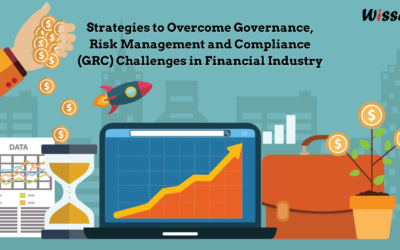Risk management in the dynamic landscape of Financial Services is not just a priority – it’s an imperative. The intricate web of economic fluctuations, regulatory changes, and technological advancements necessitates a robust approach to risk management. In this blog, we delve into the crucial aspects of risk assessment, risk management, and effective strategies for mitigating risks within the financial services sector.
Understanding Risk in Financial Services
Risk in financial services encompasses a wide range of potential challenges that can impact an institution’s stability, reputation, and profitability. These risks can be broadly categorized into various types, including market risk, credit risk, operational risk, liquidity risk, and regulatory risk. The interconnectedness of these risks makes it essential for financial institutions to adopt a comprehensive risk management framework.
How to Assess Risk?
The first step in effective risk management is a thorough risk assessment. This involves identifying and evaluating potential risks that the institution may face. A robust risk assessment process considers both internal and external factors, historical data, and forward-looking analyses. It aims to quantify the impact and likelihood of each risk event, enabling organizations to prioritize their efforts and allocate resources accordingly.
What are Risk Management Strategies?
Diversification : In the realm of investment, diversification remains a fundamental risk management strategy. Spreading investments across different asset classes, industries, and geographical regions can help mitigate the impact of losses in any single area.
Stress Testing : Conducting stress tests simulates adverse scenarios, allowing financial institutions to assess their resilience in the face of unexpected shocks. This helps uncover vulnerabilities and adjust strategies accordingly.
Risk Transfer : Insurance and derivatives can be used to transfer specific risks to third parties, reducing the direct exposure of the institution.
Robust Compliance : Stringent compliance with regulatory requirements ensures that institutions operate within the legal framework, minimizing the risk of regulatory penalties and reputational damage.
Operational Excellence : Streamlining operational processes and adopting best practices can reduce operational risks stemming from errors, inefficiencies, and technology glitches.
How to Mitigate Risks Effectively?
Governance and Oversight : Strong governance structures with clear lines of responsibility ensure that risk management strategies are implemented consistently and effectively.
Data Analytics : Utilizing advanced data analytics can help identify patterns and trends, enabling institutions to make informed decisions and detect anomalies that may indicate emerging risks.
Cybersecurity Measures : Given the increasing digitization of financial services, robust cybersecurity measures are essential to protect sensitive data and mitigate the risks associated with cyber threats.
Continuity Planning : Establishing comprehensive business continuity plans ensures that operations can continue smoothly in the event of disruptions, minimizing downtime and associated losses.
Employee Training : Well-trained employees are better equipped to identify and address risks in their daily activities, fostering a risk-aware culture.
The Significance of Effective Risk Management
Preserving Reputational Integrity : Effective risk management safeguards an institution’s reputation by minimizing the likelihood of negative events that could erode client trust.
Regulatory Adherence : A strong risk management framework ensures compliance with evolving regulations, reducing the likelihood of fines and penalties.
Stability and Resilience : By identifying and mitigating potential risks, financial institutions enhance their stability and resilience, even in times of economic uncertainty.
Enhanced Decision-Making : Informed risk management strategies enable institutions to make confident decisions, avoiding undue exposure to potentially damaging risks.
Conclusion
In the intricate landscape of financial services, managing risk is a continuous endeavor that requires a proactive and multifaceted approach. From rigorous risk assessment to strategic risk management and effective risk mitigation strategies, financial institutions must adopt a holistic approach to safeguard their interests and the interests of their stakeholders. By doing so, they can navigate the challenges of the ever-evolving financial landscape while maintaining stability, profitability, and credibility in the eyes of clients and regulators alike.
Ready to elevate your risk management strategies in the dynamic world of financial services? Partner with Wissda , your trusted advisor in risk assessment, management, and mitigation. Our expertise will empower your institution to navigate the challenges of the ever-evolving financial landscape while maintaining stability, profitability, and credibility. Contact us today to fortify your financial future.






“An insightful dive into risk management within financial services! The breakdown of risk types and strategies, from diversification to cybersecurity measures, is comprehensive. How do financial institutions typically balance the need for innovation and growth with the imperative of risk mitigation? Looking forward to more blogs offering practical insights for navigating the evolving landscape of risk in finance!”